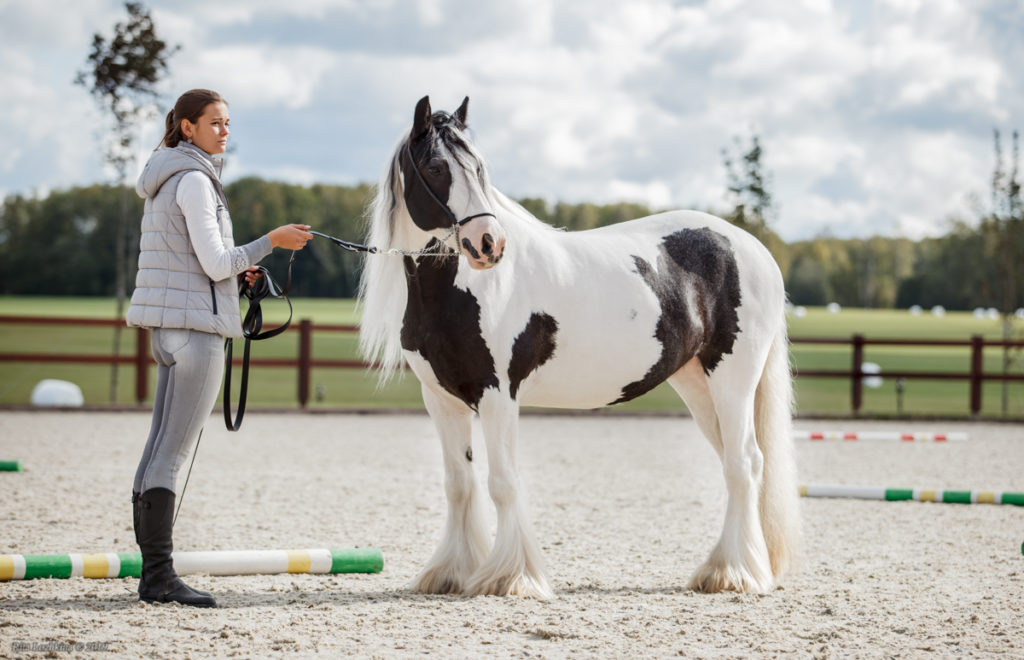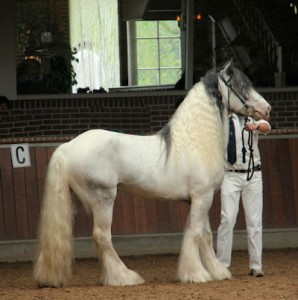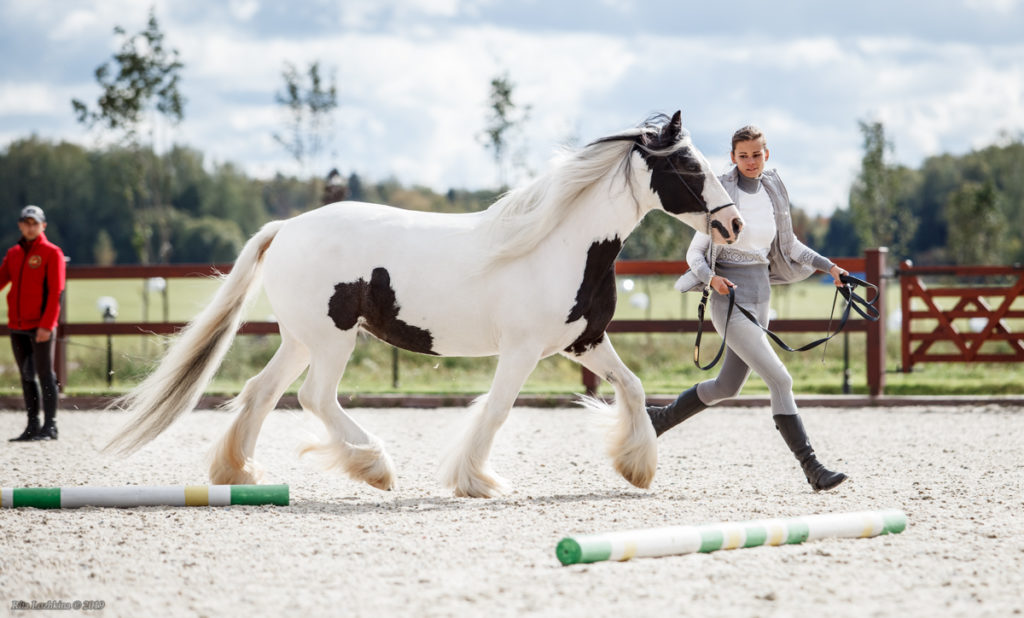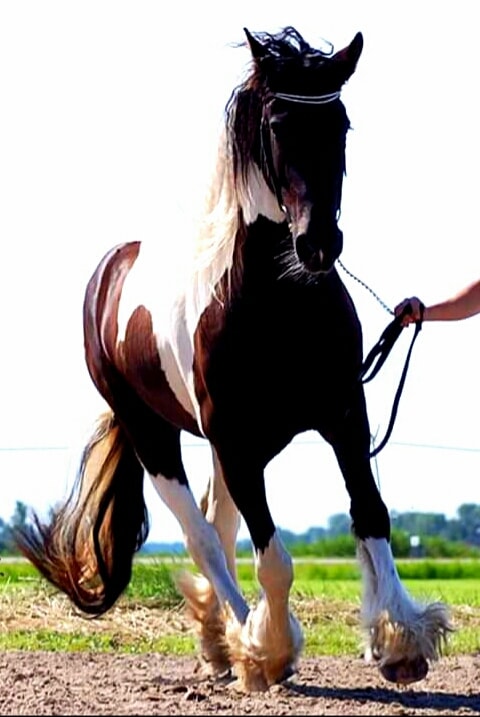The Grai TYPE is the 2nd most common type of tinker (after COB). The Grai tinker is more refined, and lighter than the cob and vanner, therefore making it more suited for sport. The Grai should be calm, elegant and confident looking

HEIGHT
Typically ranges between 135cm to 156cm, but smaller and larger Grais are known
COLOUR
Often solid and tobiano varieties. Other colours are accepted.
HEAD
Normal to small size and graceful. Roman noses occur occasionally.
EYES
Big, bold and intelligent eyes. Blue and half blue eyes can occur.
EARS
Well placed, upright and not too close together. Small to normal size, and point forwards.
JAW and THROAT
Jaws are normal and match the head. The throat is not too wide.

NECK
Normal to good length. The neck sits high on the chest and is well muscled. The neck lays in in more upright, vertical position. A muscled under neck is not desired.
WITHERS
A sufficient to good wither that gradually flows into the back.
SHOULDER
A good length. A more sloping shoulder, compared to cob and vanner types.
FORELEGS
The forelegs should be firm and positioned correctly. The legs are finely built, to match the overall appearance of the Grai. The forelegs are well placed. Seen from the front, there should be a hoofs width between the legs. From the side, the pastern should have a 45 degrees angle. The forelegs are not too long, and the pasterns are of sufficient length and springy. The joints are well developed.
BACK and LOINS
A strong and normal length back for the type. It is acceptable for Grai to have a slightly longer back.

CHEST
Not too wide, not too narrow.
RIBS
Well rounded. The backbone should not be visible.
CROUP
Good length and well rounded. Should be slightly sloping.
HIND LEGS
The hind legs should be well defined and positioned correctly. The legs are finely built to match he overall refined appearance of the Grai. Seen from behind, the horse has straight legs Seen from the side, the legs are held strong and good. The gaskin is sufficiently long and muscled. The joints are well developed and defined. The hocks should be large and flat. the angle of the hocks should be about 150 degrees. The pasterns should have an angle of about 55 degrees.
HOOVES
The hooves should be equally shaped, firm and not too big.
FEATHER
Less feather than cob and vanner is accepted. Feather should start from the hock, behind the knee and should cover the hoof at the front and back.
MANE and TAIL
Enough hair present
MOTION
The Grai has active and powerful movement. A large stretching movement, where all joints are used sufficiently.


